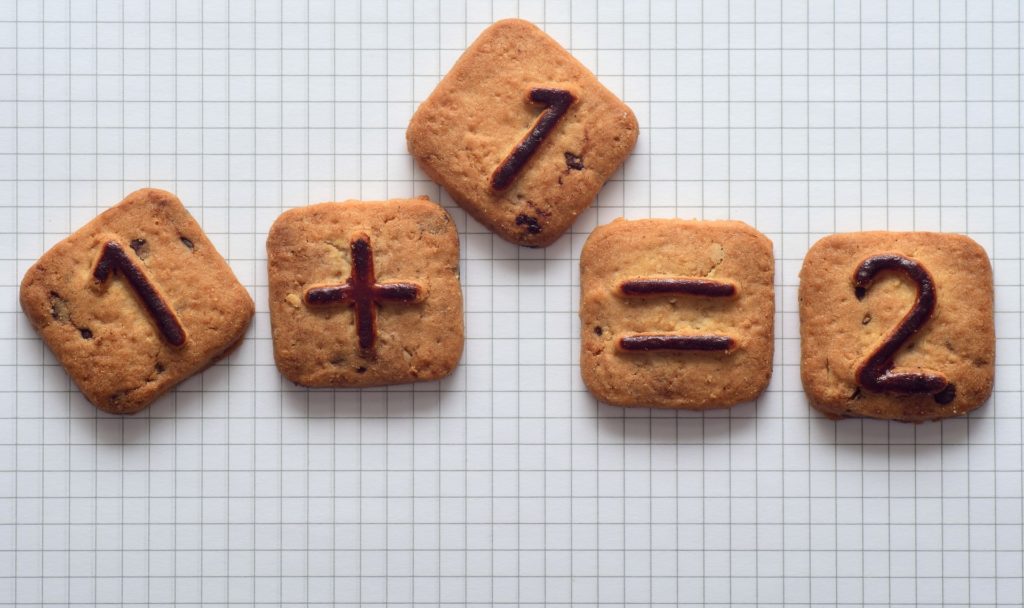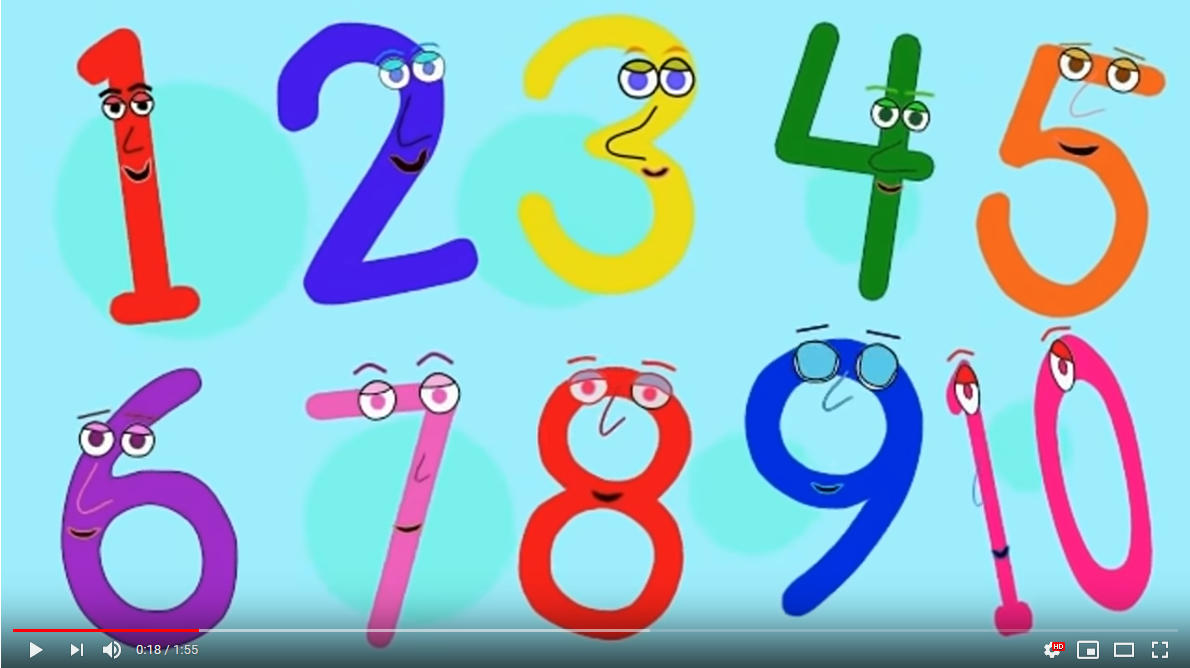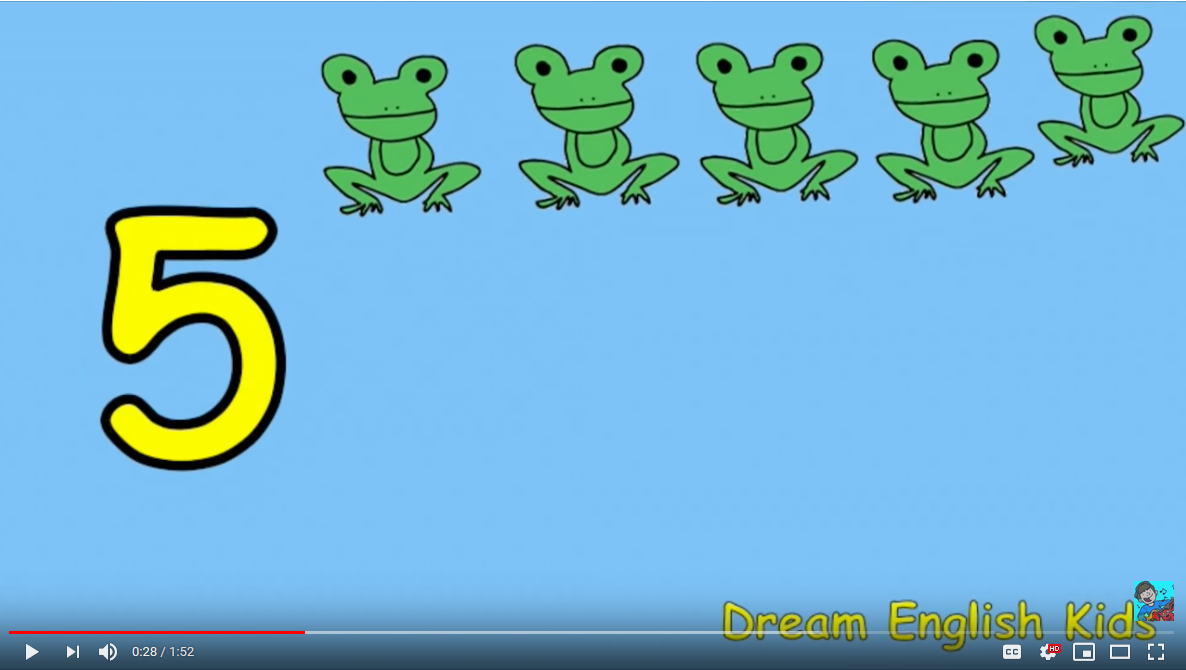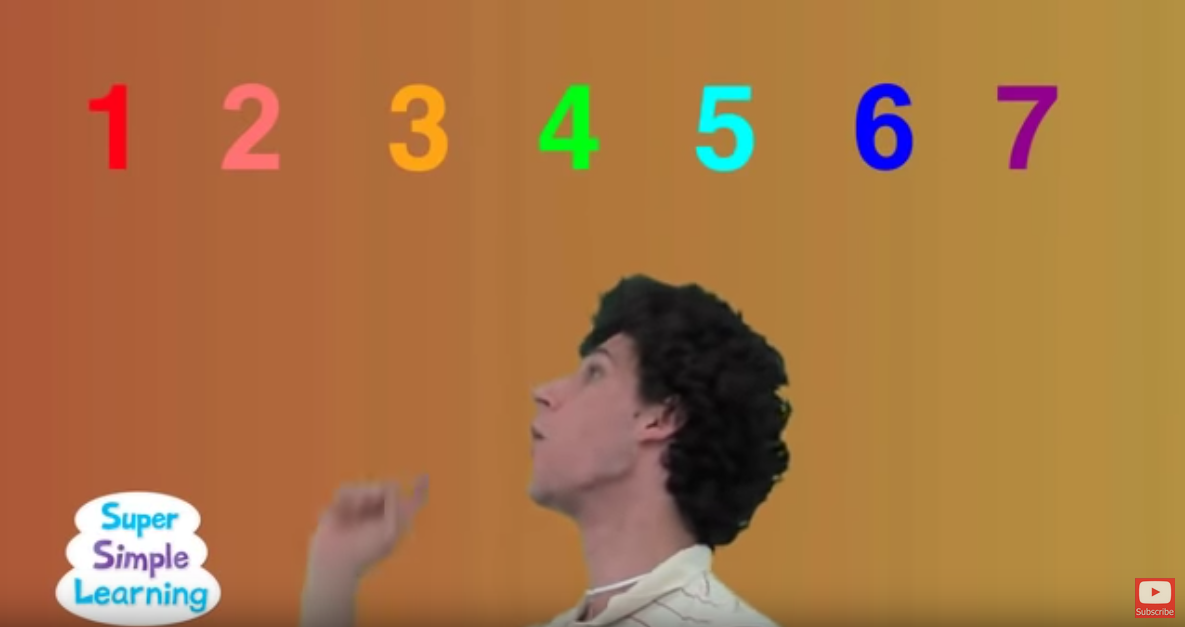To start teaching addition to 5 year olds, you need to remember 2 things.
- It must be fun
- It’s an everyday occurrence and part of life
The reason I say this, is because it is easy to get caught up in the idea that addition is… only part of maths, which is a calculation …which requires a pencil and paper… a concentrated look on your face and valuable time spent sitting down focussing on numbers.
Err, No!
If you are in primary school and are only 5 years old, that is not what addition is about.
To start teaching addition to 5 year olds, you have to treat it as a practical process to solve a problem.
In other words, if I were hungry, I would get some food. If I were thirsty, I would get a drink. So, if I want to know how many toy cars I have, I would count them. If I want to check that I had collected ALL my socks from the clean washing basket, I would add these all up too.
So, addition has to be a practical activity, which does not always involve, paper, pencils or even sitting down. So, when we teach, this id the mind set we start with.
When my daughter was two years old, she counted things regularly.
Why?
Because she liked to.
When children learn a new skill, they usually enjoy doing it over and over again, simply because they can do something now, they couldn’t do before.
She would pick up gravel from our garden and randomly start counting to see how many she’d picked up. She’d pick up twigs and do the same.
Once she had learnt to say numbers in a sequence, and could count from 1-10, she loved repeating the act of counting everything around her.
She counted everything, by herself without prompting, help or encouragement.
At this point, she couldn’t distinguish all the numbers from 1-10, and didn’t really understand why a 3 was different from a 6, but she could count things 1 2 3 4 5 6 7 8 9 10.
She did this by learning from song videos like these and copying:
When she could count in sequence. I showed her, how to count things using this number sequence. For example, we counted:
The fruit, we bought from shopping.
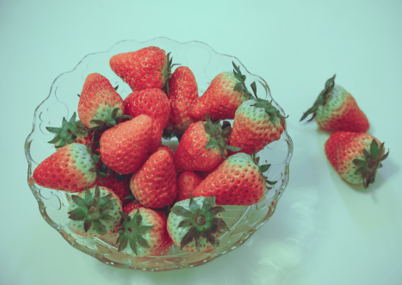
How many coins were in my bag?
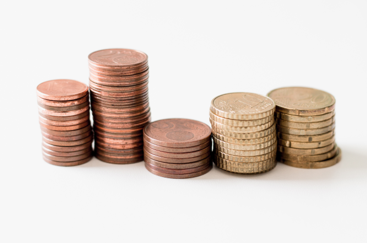
How many pairs of socks we had to put away?
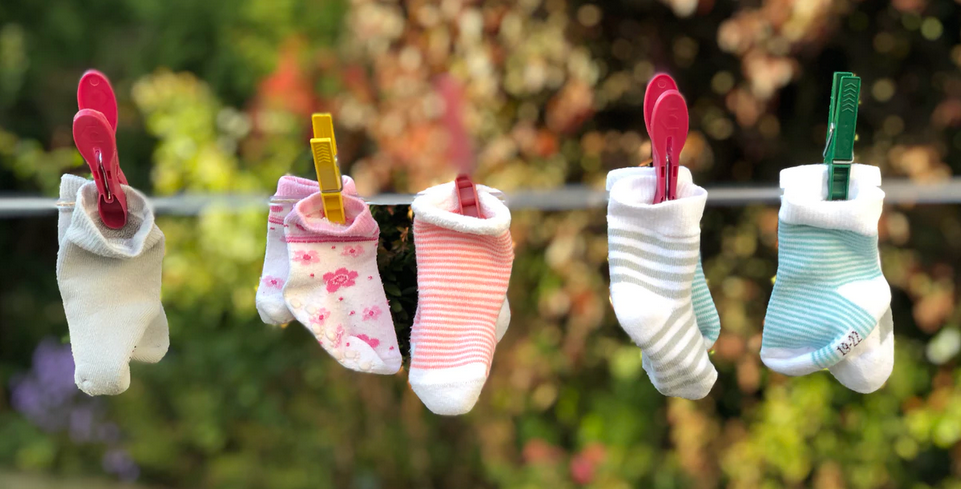
By the time she was 3, she was ready to move on and start adding.
But before we started that, there were a few things I had to check she could do.
- Firstly, she needed to understand what the numbers meant.
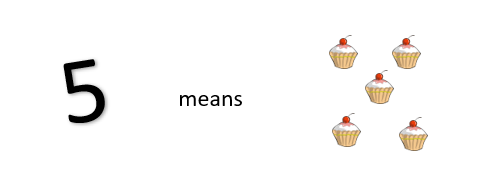
2. She also needed to understand that small groups could be combined to make one big group, by putting things together.
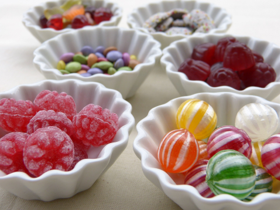
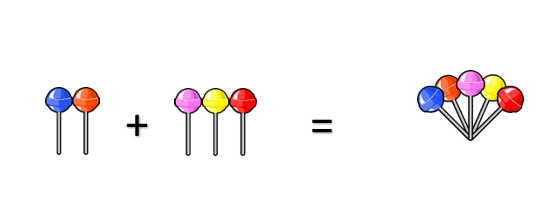
3. Once she could group things together and count them physically, she was ready to add things up on her hands, before she could move onto doing paper calculations.
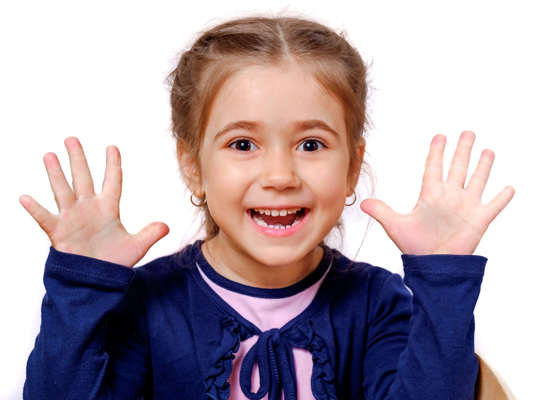
These were easy because she could picture calculations by combining things too.
For example:

Once she could do these verbally, she needed to be able to write her numbers clearly.
She had already learnt to write numbers by this time and could recognise all the numbers to ten, saying them and writing them clearly – even if 5 was often it’s mirror image.
She did this by using flash cards and doing memory games.
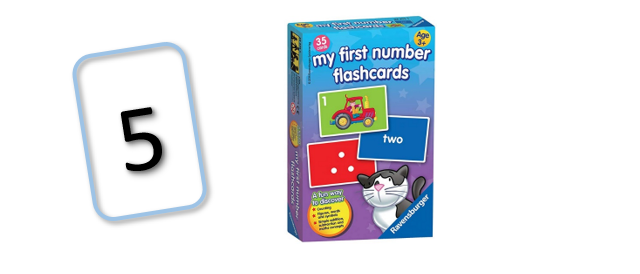
Although, she did this around 3 years old. Most children start to practice writing their numbers around 3 years old in nurseries now.
It’s not usual to teach a child any earlier, because they are not developmentally ready in all areas, so it all depends on the child’s individual rate of development. Therefore, you should follow their lead.
Some children are not ready until they are 5 so do not try to force them to do something, they are not ready to do as this will backfire in the long run, slowing down the learning process. When they are mentally and physically ready, they will do things very quickly, so exercise patience.
When she was able to write numbers, she was able to write them under the pictures.
For example:
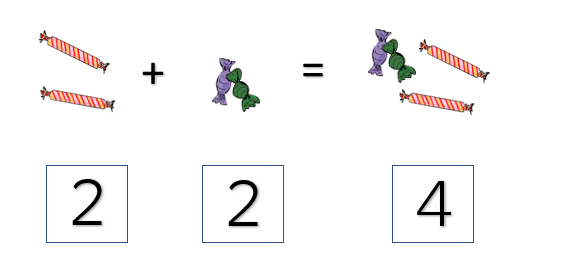
4. Once she could do this, she was ready to start doing calculations like the following:
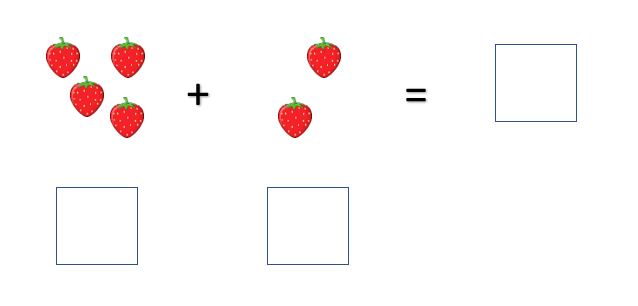
5. By the time she was 5, she was able to do simple straight-forward calculations like the following, using counters or her fingers to help her.

So, to start teaching addition to 5-year olds or KS1, the process needs to start long before they are 5 years old (if possible).
Start them early, so that they can learn, whilst taking their time and enjoying the learning process, rather than cramming the process into a year.
So, let’s recap the steps and the skills needed to be achieved for a 5-year-old to start adding up independently.
What children need to know before they start learning addition
Skill 1. Before they can add, infants and primary aged children at 5 years old need to be able to count in units to 5, 10 and 20 first; progressing to 50, then 100 before they reach Year 2.
They also need to be able to count backwards as well as forwards, by the end of year 1.
Skill 2. Children need to know the order that numbers go in.
0 1 2 3 4 5 6 7 8 9 10
Although, children learn to say their numbers from a very young age quite quickly, this does not mean that they can recognise the numbers when they are written down, or even put them in the right order once they are given number cards.
Therefore, they also need to be able to recognise and say any number between 0 and 20, when they see it.
Skill 3. They should know what the number means.
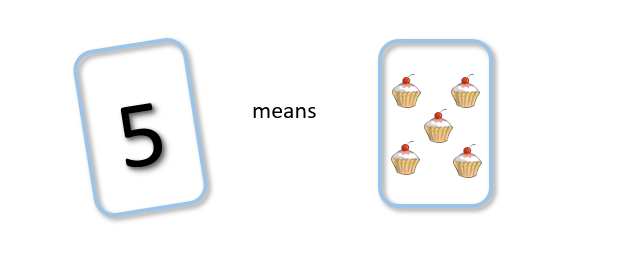
They must also be able to count their fingers.
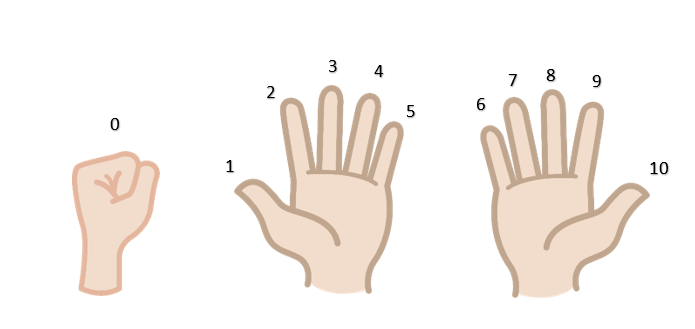
and count counters

Once they can recognise their numbers from 0-20; say them in the right order and put number cards in a row in the correct order, then they are ready to start learning how to add using the methods below.

Skill 4. 5-6 year olds should also be able to count in 10s, not just ones, both backwards and forwards.
They need to do this between 0 and 50
10, 20, 30, 40, 50
5, 10, 15, 20, 25, 30, 35, 40, 45, 50
Use these simple adding methods to teach your 5-year-old or KS1 child how to add.
Activities to start teaching addition to 5 year olds
- Children first need to add up physical objects, like fruit, toys, dishes, glasses, cutlery.

2. Use fingers and counters to add up physically
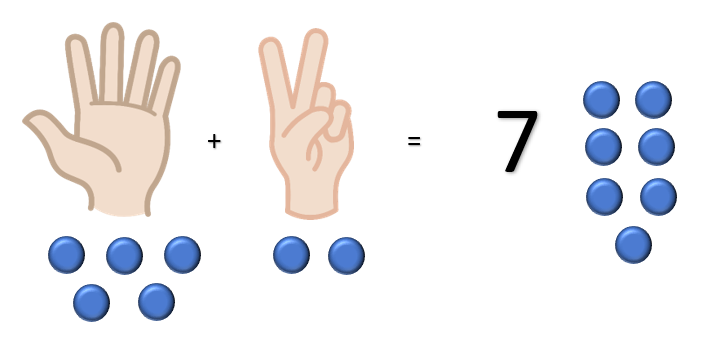
Place 5 counters in front of your child and then give them another 2 counters. Ask them to count how many counters they have altogether.
3. Repeat the same question, but this time ask them to use their fingers.
Repeat this for different amounts up to 5 first and then 10.
Do this both for counters and fingers to show that it doesn’t matter what you count, the same process applies.
4. Then they need to add up pictures of items.

5. Complete questions with pictures and numbers
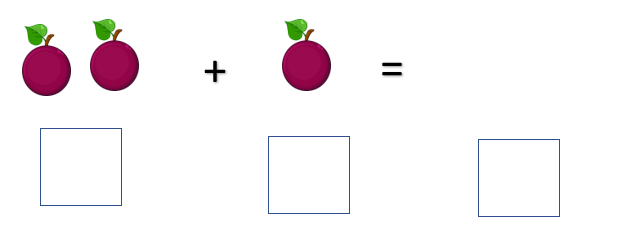
6. inally they need to write questions with numbers only for children to add, For example:
3 and 2 =
If your child can do activity 1 above they should now be able to get counters or use their fingers to answer these simple written questions.
They should be able to put up 3 fingers on one hand and two on the other, then add them together.
Alternatively, they should be able to get the right number of counters and use these instead.
It is important to learn this using counters and fingers, because when the numbers get larger, they will be able to use the counters more easily than their fingers, until they learn mental maths strategies when they get older, so that they will not need to use counters at all.
In the meantime, because young children are kinaesthetic learners, counters and counting cubes are a necessary part of learning.
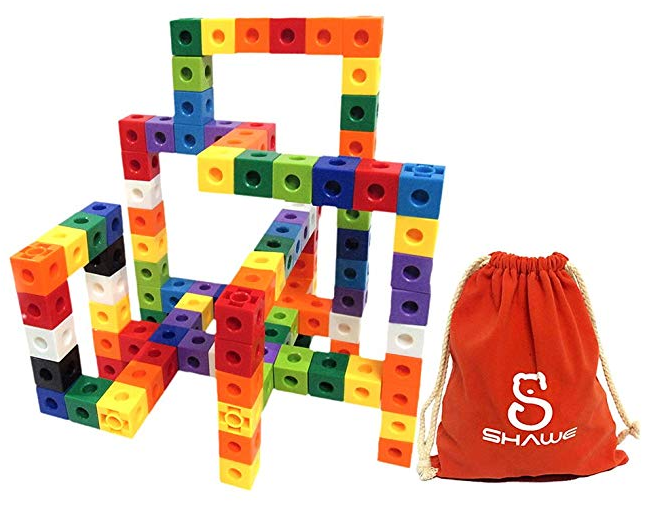
7. Write questions like:
3 + 2 =
for your child to work out.
This now introduces the maths calculations they will be using for many years to come.
For pre-schoolers or children under 5 years old, it is not necessary to go into double figures.
Simple add up numbers that can be added easily together on fingers.
Use single digits until the process is learnt well.
8. When they are 5 years old, they will also need to start learning number bonds to 5 and start to commit these to memory.
0+5 = 5
1+4 = 5
2+3 = 5
3+2= 5
4+1 = 5
5+0 =5
They can also learn number bonds to 4, 3, and 2
When they get into year 1 and year 2, they will start to add up double digits
Like 12 + 20 =
But they will also start to use mental maths strategies to complete these calculations not counters alone.
